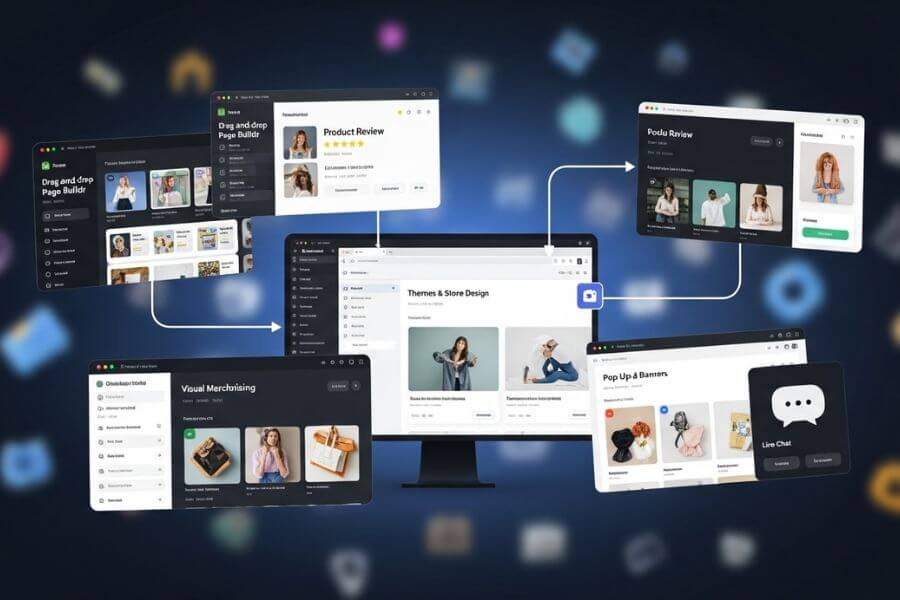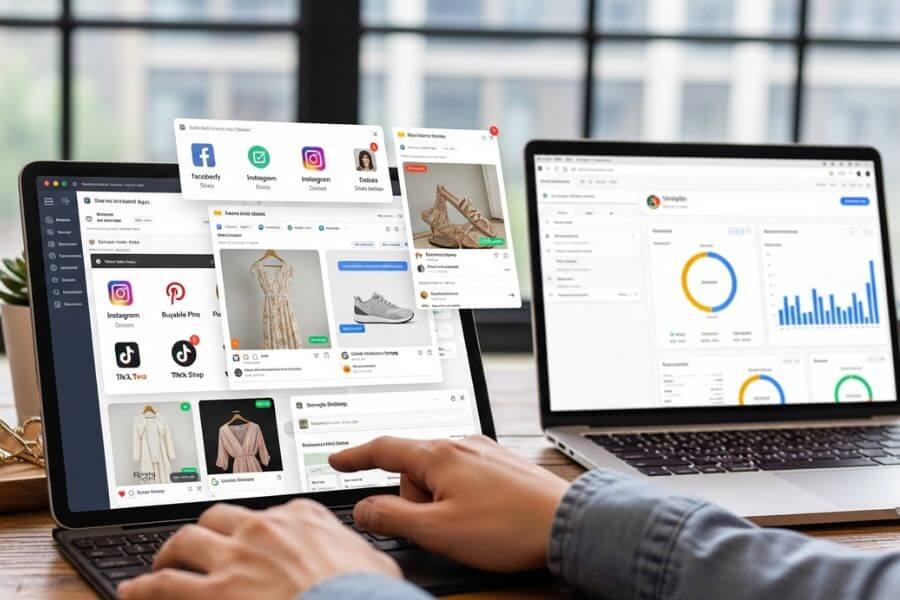In today’s hyper-competitive ecommerce landscape, winning customers goes far beyond simply listing great products and running flashy ad campaigns. The real battlefield is fulfillment: how efficiently, quickly, and reliably you can get products into your customers’ hands.
Think about it: when was the last time you ordered something online and waited weeks for it to arrive? Chances are, you either didn’t return to that store or left a negative review. On the flip side, when you order from a brand and your package arrives within two days in perfect condition, it leaves a lasting impression. That’s the power of fulfillment.
The truth is, fulfillment is the unsung hero of ecommerce success. It’s the backbone that determines whether you retain customers, reduce cart abandonment, and scale your operations profitably. Top ecommerce brands know this, and they treat fulfillment not as a side function but as a growth strategy.
In this guide, we’ll explore the 10 fulfillment secrets every successful ecommerce brand swears by, secrets you can apply to transform your logistics into a competitive edge.
1. They treat fulfillment as a growth engine, not just an operational cost
For many smaller ecommerce businesses, fulfillment is seen as an unavoidable expense, something you have to do after making a sale. The mindset often revolves around cutting costs, finding the cheapest carrier, or reducing warehouse expenses.
But the most successful ecommerce brands think differently. They view fulfillment as a growth engine, one that can drive revenue, increase customer loyalty, and fuel long-term scalability.
Here’s how:
- Customer retention: Fast and reliable delivery encourages repeat purchases. According to a Metapack study, 61% of shoppers are more likely to return to a retailer after a positive delivery experience.
- Conversion rates: Offering faster delivery options directly boosts conversions. In fact, Baymard Institute found that 22% of cart abandonments happen due to slow delivery times.
- Brand perception: Customers equate fulfillment efficiency with professionalism and trustworthiness. A delayed or lost package can undo months of marketing work.
The key difference lies in mindset. Instead of asking, “How do we make fulfillment cheaper?”, successful brands ask, “How can fulfillment make us more competitive?” They don’t hesitate to invest in technology, warehouse improvements, or 3PL partnerships because they see the payoff in customer satisfaction and lifetime value.
👉 Action step: Shift your perspective. Conduct a fulfillment audit and look for areas where improving delivery speed, accuracy, or experience could directly drive more sales, not just cut costs.
2. They offer multiple shipping options to match different customer needs
When it comes to delivery, one size does not fit all. Some customers prioritize affordability, others care only about speed, and some want flexibility. Successful ecommerce brands recognize this and provide a range of shipping options at checkout.
Here are the most common options leading brands provide:
- Economy/free shipping: Attracts cost-conscious customers and reduces cart abandonment.
- Standard shipping: Balances cost and speed, appealing to the majority of shoppers.
- Expedited/express shipping: Ideal for last-minute buyers or urgent needs.
- Same-day or next-day delivery: A game-changer in urban areas where immediacy matters.
- Buy online, pick up in store (BOPIS): Perfect for brands with hybrid retail/ecommerce operations.
This flexibility reduces friction and gives customers a sense of control. Amazon has mastered this approach by offering everything from free no-rush shipping to same-day Prime delivery.
📊 Stat to know: According to Shopify, 73% of shoppers expect affordable, fast shipping, and offering multiple options can increase checkout conversion rates by up to 20%.
👉 Action step: Review your checkout page. Are you offering at least two or three different delivery speeds? If not, consider adding options even if it means using different carriers or fulfillment partners.
3. They automate order management to eliminate errors
Manually managing orders with spreadsheets or basic tools might work when you’re shipping 10 packages a week, but as your business grows, it becomes a nightmare. Mistakes creep in: wrong addresses, duplicate shipments, overselling items, or missing orders.
Successful ecommerce brands solve this by embracing automation.
Order management software (OMS) and warehouse management systems (WMS) integrate directly with ecommerce platforms like Shopify, WooCommerce, or Amazon. They allow you to:
- Automatically route orders to the nearest warehouse.
- Sync orders across multiple sales channels (Amazon, eBay, your own website, etc.).
- Generate labels and packing slips instantly.
- Update inventory in real time across all platforms.
- Trigger customer notifications (order confirmation, tracking updates).
By automating repetitive tasks, businesses can process thousands of orders daily with minimal human intervention. This not only reduces errors but also speeds up fulfillment dramatically.
📊 Stat to know: Businesses that adopt automation can reduce fulfillment errors by up to 67%, according to Supply Chain Dive.
👉 Action step: If you’re still entering orders manually, research tools like ShipStation, Skubana, or a 3PL with integrated tech. Start small by automating label creation and gradually expand.
4. They use distributed warehousing to get closer to customers
Shipping everything from a single warehouse may seem cost-effective, but it often means longer delivery times and higher shipping costs. The best ecommerce brands avoid this by adopting distributed warehousing.
This strategy involves storing inventory in multiple fulfillment centers strategically placed across different regions or countries.
The benefits are huge:
- Faster delivery: Customers get their orders in 1–2 days because items ship from nearby locations.
- Lower shipping costs: Shorter distances reduce carrier fees.
- Better scalability: During peak seasons, workloads are spread out instead of bottlenecked at one warehouse.
Think of it as mirroring Amazon’s FBA model. By having dozens (or even hundreds) of fulfillment centers, Amazon makes 2-day shipping possible almost anywhere in the U.S.
📊 Stat to know: Retailers using distributed warehousing can cut shipping times by up to 50% and reduce costs by 15–30%.
👉 Action step: Analyze where most of your customers are located. If 60% of orders come from the West Coast, consider splitting inventory between East and West Coast warehouses. Many 3PLs already offer nationwide networks you can tap into.
5. They invest in real-time inventory visibility
Stockouts and overselling are two of the fastest ways to lose customer trust. Nothing is more frustrating for a buyer than placing an order only to receive an email saying, “Sorry, this item is out of stock.”
Successful ecommerce brands prevent this with real-time inventory visibility.
With the right systems, you can:
- Track inventory levels across multiple warehouses and sales channels.
- Set low-stock alerts to trigger automatic reordering.
- Use predictive analytics to forecast demand for upcoming seasons.
- Show customers accurate stock counts on product pages.
This not only prevents disappointment but also optimizes cash flow by avoiding overstocking. Brands like Zara and Nike use advanced demand forecasting tools to maintain lean inventories while still meeting customer demand.
📊 Stat to know: According to IHL Group, stockouts cost retailers $1 trillion annually worldwide.
👉 Action step: If you’re not using one already, invest in an inventory management system like TradeGecko (QuickBooks Commerce), Cin7, or NetSuite.
6. They turn packaging into a brand experience
Successful ecommerce brands know that packaging isn’t just about protecting the product; it’s part of the customer experience.
Think of Apple. Opening a new iPhone feels special because the packaging is sleek, consistent, and well thought-out. That moment of unboxing creates excitement and strengthens brand loyalty.
Here’s how top ecommerce companies use packaging strategically:
- Custom branding: Boxes, tissue paper, and inserts designed with brand colors and logos.
- Eco-friendly options: Recyclable or compostable packaging resonates with environmentally conscious buyers.
- Personal touches: Handwritten notes, discount coupons, or small freebies.
- Unboxing experiences: Memorable designs that customers want to share on social media.
📊 Stat to know: Dotcom Distribution found that 40% of consumers are more likely to share a purchase on social media if it comes in branded packaging.
👉 Action step: Evaluate your current packaging. Could you make it more eco-friendly, personalized, or “Instagram-worthy”? Small changes can yield huge customer loyalty.
7. They build resilient supply chains for peak seasons
The holiday season, including Black Friday and Cyber Monday, can make or break an ecommerce brand. The most successful ones prepare months in advance by building resilient supply chains.
Their strategies include:
- Forecasting demand using past sales data and trends.
- Stocking up early to avoid last-minute supplier delays.
- Partnering with multiple carriers in case one reaches capacity.
- Communicating transparently with customers about expected delivery times.
Brands that fail to prepare often face delayed shipments, stockouts, and angry customers, leading to bad reviews and lost future sales. Meanwhile, those that prepare not only survive peak seasons but thrive, capturing market share while competitors struggle.
📊 Stat to know: Deloitte predicts that holiday ecommerce sales will grow 11–15% annually, making peak season readiness more critical each year.
👉 Action step: Start planning for Q4 in Q2 or Q3. Meet with suppliers, run demand forecasts, and secure carrier agreements well before the rush.
8. They embrace returns as a customer retention tool
Returns are unavoidable in ecommerce, especially in categories like fashion and electronics where sizing or product expectations vary. Instead of resisting returns, successful brands turn them into opportunities to build loyalty.
Here’s how they do it:
- Hassle-free policies: Easy-to-understand return terms with free return shipping.
- Automated portals: Customers can print return labels and track their return status online.
- Flexible options: Instant refunds, exchanges, or store credit incentives.
- Sustainability practices: Restocking, refurbishing, or reselling returned items instead of wasting them.
📊 Stat to know: Narvar found that 92% of customers will buy again from a retailer if the return process is easy.
👉 Action step: Review your return policy. Is it written from the customer’s perspective, or just focused on minimizing costs? Consider offering exchanges or credit incentives to keep customers engaged.
9. They partner with the right 3PLs for scalability
Handling fulfillment in-house can work when you’re small, but it often becomes overwhelming as you grow. Successful brands know when to scale up by partnering with a third-party logistics provider (3PL).
The right 3PL offers:
- Multiple warehouses across regions for faster delivery.
- Seamless integrations with ecommerce platforms.
- Bulk shipping discounts from negotiated carrier rates.
- Scalability to handle seasonal spikes without hiring more staff.
This allows brands to focus on marketing, product development, and customer relationships instead of managing warehouse chaos. For example, Gymshark grew from a small UK brand to a global powerhouse largely by outsourcing fulfillment to specialized 3PLs.
👉 Action step: If you’re struggling with warehouse space or shipping delays, start researching 3PLs that specialize in ecommerce fulfillment. Compare technology, pricing, and service reliability.
10. They continuously optimize through data and feedback
The final secret? Continuous improvement. Successful ecommerce brands don’t treat fulfillment as a one-time setup. Instead, they constantly optimize based on data and customer feedback.
Key metrics they track include:
- Order accuracy rate (percentage of orders shipped correctly).
- Average delivery time (from order placement to arrival).
- Cost per order (fulfillment + shipping).
- Customer satisfaction (reviews, survey feedback, NPS).
By reviewing these regularly, they find bottlenecks and opportunities for improvement. For example, if delivery times are too slow in one region, they may add a new warehouse or switch carriers. If packaging costs are too high, they may renegotiate with suppliers.
👉 Action step: Set up a quarterly fulfillment review. Collect data, read customer reviews, and identify one or two improvements to implement each cycle. Over time, small changes add up to massive competitive advantages.
Conclusion
Fulfillment is often seen as the “back-end” of ecommerce, but in reality, it’s the heartbeat of your business. The brands that dominate the market, whether it’s Amazon, Nike, or Shopify-powered DTC brand,s understand that fulfillment isn’t just about moving boxes. It’s about delighting customers, building loyalty, and scaling with confidence.
By applying these 10 fulfillment secrets, you can transform your logistics from a hidden cost into a visible driver of growth. Whether it’s automation, distributed warehousing, better packaging, or leveraging 3PLs, every improvement you make brings you closer to becoming the kind of brand customers return to again and again.
In ecommerce, marketing gets customers through the door, but fulfillment is what keeps them coming back.





